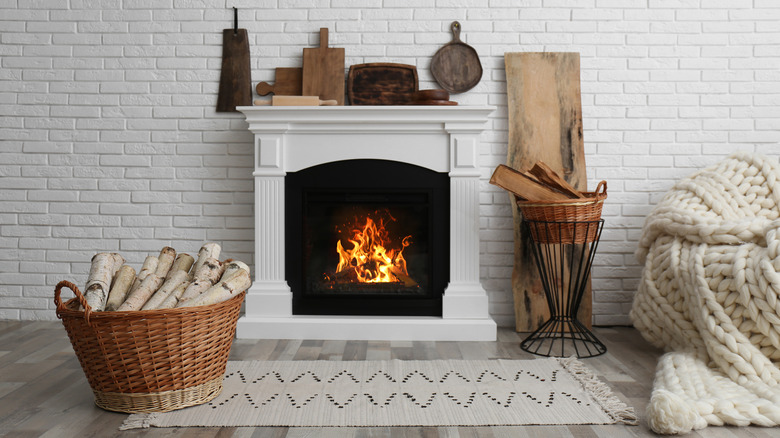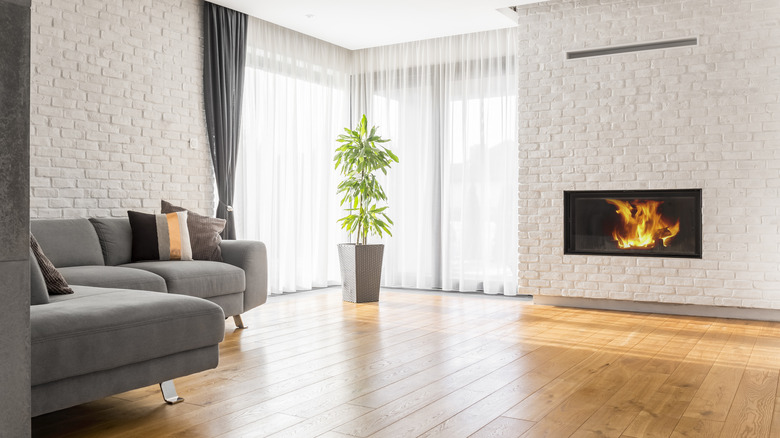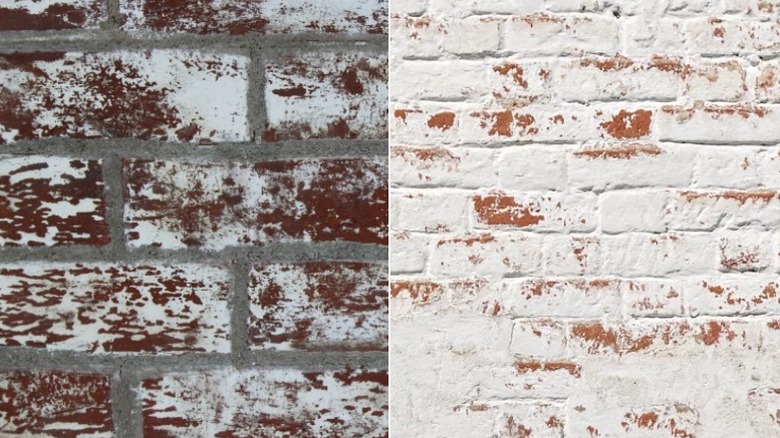German Smear Vs. Limewash: What's The Difference Between The Brick Painting Techniques?
Brick has long been a staple in homes both indoors and out. It's a low-maintenance material that can add lovely texture to surfaces like kitchen backsplashes and living room walls surrounding fireplaces. You can also pick a color you love when building or remodeling. But what about buying an existing home with red brick that's terribly outdated and a complete redo just isn't in the budget?
That's when applying a finish to an existing red brick can give it the modern look you're seeking. There are a few options to consider, including limewash and German smear. These both add white coloring to the surface of the bricks without changing the basic structure — no remodeling required. This said, with both techniques, the bricks need to be super-clean before you begin, which means power washing outside brick walls or thoroughly dusting them inside.
Beyond those basic points, limewash and German smear differ greatly in their composition and the way they're applied. Take a further look at some key differences before deciding which way to go when updating red brick for your home.
What is limewash?
Limewash is a very old style of paint made up of pulverized limestone mixed with water. It's been used to not only freshen the appearance of buildings but to discourage wear and tear by acting as a water and insect repellent for both wood and brick surfaces, as noted by the National Park Service.
This type of paint has been seeing a resurgence in popularity for several reasons. For example, it doesn't have thinners that make it unfriendly to the environment and limestone holds properties that eliminate bacteria and fungus naturally. Further, per Remodelista, limewash doesn't smell bad in comparison to other commercial paints.
Limewash works best with permeable façades, which allow it to soak into the underlying material. Thus, it can be used on brick inside homes as well as on exterior surfaces. The resulting finish can cover brick completely or offer partial coverage depending on the look you want. If you get tired of your limewash down the line, it can usually be removed with pressure washing or scrubbed it away with a wire brush.
Limewash paint is available commercially, but you can make your own by combining lime putty and water until the desired thickness is achieved. Thinner mixtures containing more water provide less coverage with a hint of the original brick showing through while thicker mixtures impart a whiter look. Whatever the color preference, limewashing is a project many DIYers with some painting experience can tackle on their own.
How German smear differs from limewash
The primary distinction of the German smear technique in comparison to limewashing is that it doesn't involve paint. With this surface whitening technique, dry cement-based mortar is mixed with water, which usually translates to 70% water and 30% mortar powder, as noted by A & X Masonry. More water added to the dry mortar yields a thinner mixture while less water offers a thicker mix to work with, so it depends on the look you're trying to achieve.
The application is different as well. With German smear, you apply the mortar and water mixture to moistened brick with a sponge or trowel or roll it on similarly to paint. Before it completely dries, some of the mixture is then removed with a water-soaked sponge or a metal brush. You can apply as much or as little German smear as you like depending on how much of the original brick color you want to show through. The end result is a durable finish that's easy to keep clean.
Because the technique isn't easy to remove once in place, however, it's important to get it done right the first time. This might mean buying a few bricks in a similar color to the ones you're working with and practicing after completely reading instructions for applying German smear. If the project seems too daunting given your skill set, you can consider hiring a professional masonry contractor to do the job for you.


